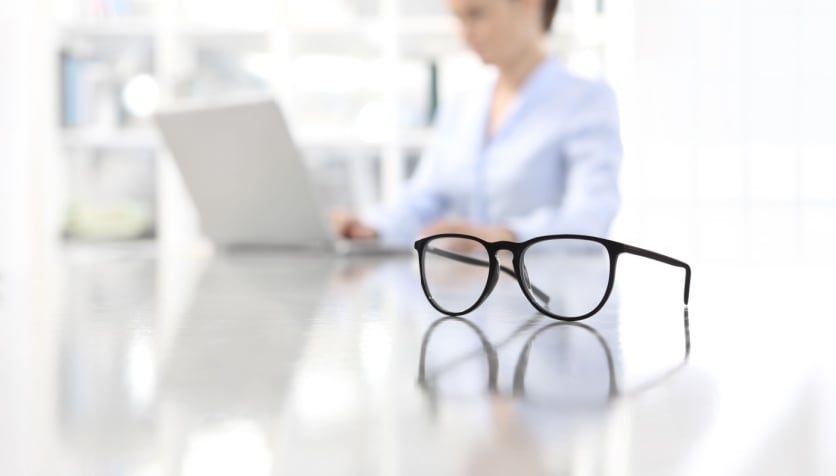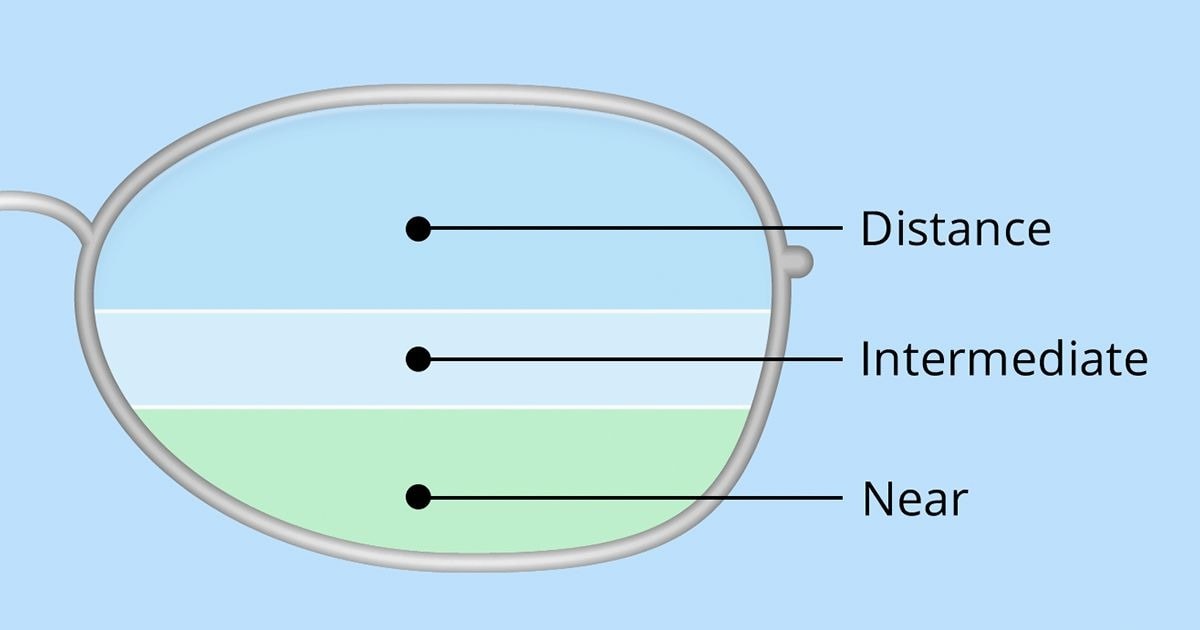People wear glasses for a variety of reasons — and not just for vision problems.
In fact, many people today are wearing non-prescription glasses strictly as a fashion statement. This trendy accessory is readily available in a range of designs, colors and materials that can add just the right touch to your outfit!
It’s important to note that non-prescription “plano lenses” have zero corrective power whatsoever, while non-prescription reading glasses offer some level of magnification, enlarging what you see up-close.
If you don’t have vision issues that require prescriptive correction, wearing plano lenses shouldn’t be a problem — they will neither damage your eyes nor cause structural issues. Some non-prescription specs, such as the type that filter blue light, may actually improve visual comfort while using digital devices.
One negative is that cheaper over-the-counter (OTC) glasses can often fit poorly and cause you unnecessary discomfort, while lenses may scratch more easily.
Quality non-prescription glasses for all types of budgets can be found with a little research. Knowing more about what to look for can help ensure you find the right type for you.
SEE RELATED: Fake glasses: What they are and why they’re trending
Do you need non-prescription reading glasses?
If you find yourself squinting to read small print (text messages, food and medication labels, etc.) and nearby objects start to seem blurry, you probably need reading glasses.
Straining to read can be a symptom of presbyopia, a condition that can be easily corrected with non-prescription reading glasses (also called “readers”). Presbyopia is quite common in people over the age of 40, a time of life when age-related changes in the eye begin to make it more difficult to focus on close-up objects or smaller printed text.
Reading glasses can help. They work to magnify words and images on the page or digital screen, and to enlarge the appearance of nearby objects, making it easier for you to read and see clearly — all without the need for a prescription from an eye doctor.
The level of magnification (or “power”) on the lenses of over-the-counter (OTC) readers ranges from +0.25 to +6.00. The right level for you will depend on the specific reason you need to magnify text, images or objects.
For computer work, for instance, low-power reading glasses (+1.25 to +1.5) are probably enough, while stronger glasses (+2.0 to +2.5) might make more sense for reading things up close.
Since both lenses in a pair of readers typically have the same power, this option is not suitable for more complicated vision problems that do require a prescription, such as astigmatism, myopia (nearsightedness) and hyperopia (farsightedness).
People who are simply losing sharp, focused vision due to age, however, will likely benefit from the type of magnification offered by non-prescription reading glasses. Other advantages include:
- Cost – These glasses are less expensive than those available from your eye doctor, making them ideal for people who may want multiple pairs for home and office use — or for people who continually lose or break glasses and need frequent replacements.
- Choice – You’ll find a wide selection of magnification power, as well as lens types, including options for bifocals and aspheric lenses. You may want to think about pairs with differing strengths for different activities, such as reading vs. detailed computer work.
- Customization – Reading glasses can be customized with extras that best suit your needs, such an anti-reflective lens coating, which will help protect your eyes from glare.
The best part? Many non-prescription readers are eligible for FSA or HSA expenses.
It’s important to keep in mind that reading glasses are intended for occasional use and not for full-time wear. If you feel like you need to use glasses regularly, consult your eye doctor.
Stylish non-prescription glasses
Gone are the days of wearing glasses only because you need them to see. These days, many people are wearing non-prescription glasses as fashion accessories to complement their outfits, moods or activities.
If this sounds like you, consider plano lenses without any magnification — you’ll get the stylish look you want without any visual distortion.
For a bold fashion statement, why not play around with frame color and lens tints? You’ll find a wide range of colors, materials and designs to suit every occasion, personality and budget. Just keep in mind that high-quality non-prescription glasses are typically more expensive because they are lighter (though still durable) and more comfortable for daily wear, while cheap lenses can scratch easily and cause focus issues.
Non-prescription glasses that filter blue light
Like many people today, you’re probably spending large amounts of time in front of digital screens (TV, computer, phone, etc.) for work and for play. As a result, your eyes may feel dry and tired, or you may get annoying headaches that make it even more difficult to focus.
These symptoms can be an indication of computer vision syndrome, a type of digital eye strain caused by extended screen time without visual breaks. In an ideal world, the solution would be to minimize screen time; however, doing so is not always possible given modern work obligations and lifestyle habits.
If you can’t get away from your screen(s), why not try non-prescription glasses that can provide additional relief?
You can purchase these without a prescription and they come with lenses of varying power — unmagnified, magnified and multifocal lenses — depending on what level of power you need (or don’t need) for your given activities.
Another advantage of blue light blocking glasses is that you can wear them all day with no side effects. This solution is ideal for those who spend long hours in front of digital screens.
Are non-prescription, light-adaptive glasses right for you?
Light-adaptive glasses feature clear lenses that darken automatically when exposed to sunlight. Also called photochromic lenses, these are convenient for people who want the benefits of sunglasses without having to get a separate pair.
If you experience light sensitivity (photophobia), transition-style glasses might be a good option for you.
While Transitions Lenses is the most well-known when it comes to light-adaptive glasses, there are other brands out there that offer similar design and color options. The best part is that these light-adaptive lenses are compatible with all kinds of frames and materials — and you can even find non-prescription, transition-style glasses for kids!
One disadvantage that should be noted: These glasses don’t work as well from within a vehicle, as most windshields already have UV protection — meaning sunlight is less likely to enter and trigger the lenses to change. If you drive longer distances as part of your daily routine, these may not be right for you.
Non-prescription glasses for kids
According to theAmerican Academy of Ophthalmology, it’s perfectly safe for kids to wear non-prescription glasses.
This eyewear is increasingly popular as part of “geek chic” fashion, and your child may one day request a pair to fit in with their peers who are wearing non-prescription specs. If you have the budget for extra accessories, there’s certainly no harm in giving them a pair of glasses with plano lenses, which have no magnification power.
Just be sure to visit an eye doctor first — they will determine whether or not your kid has any existing vision problems that do need correction via prescription lenses.
When you are ready to purchase non-prescription glasses for kids, how will you know what to look for? Some factors to consider are:
- Materials – Plastic frames are always a good choice for young people, as they’re lightweight and flexible. If you choose metal, ensure that the particular metal (or metal alloy) is hypoallergenic.
- Durability – Frames should be strong enough so that kids don’t end up breaking them while playing, while lenses should be sturdy enough to withstand scratches, as these can distort your child’s vision.
- Style – The type of glasses you choose should suit your child’s preferred activities. Outdoorsy kids, for example, may benefit from a pair of non-prescription transition-style glasses that will protect their eyes from sun damage.
Ultimately, if you do decide to buy a pair of stylish glasses for your kid, either with or without prescription lenses, you want them to wear them. Be sure to include children in the decision-making process and get frames in a modern design they truly love so they’re more likely to stick with it.
Choosing the right non-prescription glasses
Once you’ve decided to purchase stylish non-prescription glasses, you’ll find a lot of fashionable choices on the market, at all kinds of retailers — including drugstores, department stores and a variety of online sellers.
How to choose what’s right for you?
It may seem confusing, but an excellent way to start narrowing your search is to remember why you would like a pair.
- If you want them purely for style, you can simply pick a pair (or two) in your favorite frame shape and have just fun with them.
- If you’d like them for reading or computer work, in addition to frame style, you’ll want to pay attention to the level of magnification (and even anti-glare coating).
READ NEXT: Non-prescription sunglasses: What to know before buying










